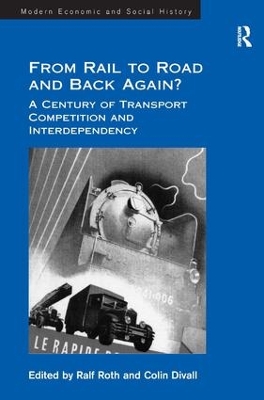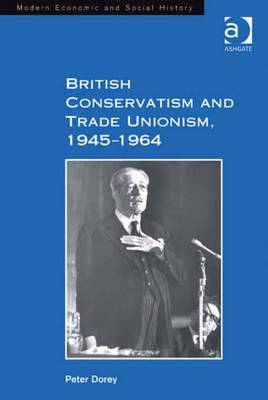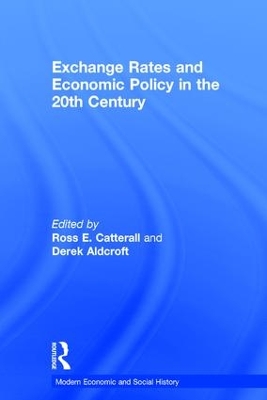Modern Economic and Social History
8 total works
British Conservatism and Trade Unionism, 1945-1964
by Peter Dorey and Professor Derek H. Aldcroft
For most of the twentieth century, the Conservative Party engaged in an ongoing struggle to curb the power of the trade unions, culminating in the radical legislation of the Thatcher governments. Yet, as this book shows, for a brief period between the end of the Second World War and the election of Harold Wilson's Labour government in 1964, the Conservative Party adopted a remarkably constructive and conciliatory approach to the trade unions, dubbed 'voluntarism'. During this time the party leadership made strenuous efforts to avoid, as far as was politically possible, confrontation with, or legislation against, the trade unions, even when this incurred the wrath of some Conservative backbenchers and the Party's mass membership.
In explaining why the Conservative leadership sought to avoid conflict with the trade unions, this study considers the economic circumstances of the period in question, the political environment, electoral considerations, the perspective adopted by the Conservative leadership in comprehending industrial relations and explaining conflict in the workplace, and the personalities of both the Conservative leadership and the key figures in the trade unions. Making extensive use of primary and archival sources it explains why the 1945-64 period was unique in the Conservative Party's approach to Britain's trade unions. By 1964, though, even hitherto Conservative defenders of voluntarism were acknowledging that some form of official inquiry into the conduct and operation of trade British unionism, as a prelude to legislation, was necessary, thereby signifying that the heyday of 'voluntarism' and cordial relations between senior Conservatives and the trade unions was coming to an end.
With a few exceptions, historiography has paid little attention to the impact of French economic thought during the American Revolution, focusing instead on the Revolution's links with Britain. This book outlines how, from the mid-eighteenth to the early-nineteenth century, the political and social dimension of French economic thought, and particularly of Physiocracy, spurred American Republicans to a radical shaping of American agrarian ideology. Such a perspective allows for a reconsideration of several questions that lie at the heart of contemporary historiographic debate: the connection between politics and economics; the meaning of republicanism; the foundations of representation; the role of Europe in the Atlantic world; and the interaction between national histories and global context. In particular, the research methodology adopted here makes it possible to reconstruct how American national identity, conceived as an expression of society in economic terms, emerged through a cosmopolitan way of thinking focused on the uniqueness of the new state.
Following its foundation in 1957, the European Economic Community set about establishing itself as a major player on the world stage. One of the first key arenas in which the new organisation began to make its presence felt was the GATT negotiations that took place between 1963 and 1967, known as the Kennedy Round. Through a reconstruction of these on-going negotiations, this book charts the emergence of the EEC as a world trading power and the strategies it adopted that were to have a lasting effect upon European trade policies.
As well as proving an important background to the Kennedy Round, the study explains how the EEC/European Union became a powerful actor in international trade, championing a liberal attitude toward the industrial sector but a protectionist one in agriculture. It also addresses the impact of the EEC/EU as regional trading area on the multilateral and global trading system and the EEC/EU trade policy-making.
Through an historical analysis of these topics, a much fuller understanding of the actual role and stance of the EEC/EU in world trade is provided, one that not only illuminates events at the time, but provides essential background to the challenges still faced by the international trading system and the World Trade Organization. Based on a wealth of documentary research drawn from European and US archives, this book will be welcomed by all wishing to better understand the complex nature of international trade in an increasingly globalised market place.
Economic historians have perennially addressed the intriguing question of comparative development, asking why some countries develop much faster and further than others. Focusing primarily on Europe between 1914 and 1939, this present volume explores the development of thirteen countries that could be said to be categorised as economically backward during this period: Albania, Bulgaria, Estonia, Greece, Hungary, Latvia, Lithuania, Poland, Portugal, Romania, Spain, Turkey and Yugoslavia. These countries are linked, not only in being geographically on Europe's periphery, but all shared high agrarian components and income levels much lower than those enjoyed in western European countries.
The study shows that by 1918 many of these countries had structural characteristics which either relegated them to a low level of development or reflected their economic backwardness, characteristics that were not helped by the hostile economic climate of the interwar period. It explores, region by region, how their progress was checked by war and depression, and how the effects of political and social factors could also be a major impediment to sustained progress and modernisation. For example, in many cases political corruption and instability, deficient administrations, ethnic and religious diversity, agrarian structures and backwardness, population pressures, as well as international friction, were retarding factors.
In all this study offers a fascinating insight into many areas of Europe that are often ignored by economists and historians. It demonstrates that these countries were by no means a lost cause, and that their post-war performances show the latent economic potential that most harboured. By providing an insight into the development of Europe's 'periphery' a much more rounded and complete picture of the continent as a whole is achieved.
Exchange Rates and Economic Policy in the 20th Century
by Professor Derek H. Aldcroft
Drawing upon an impressive range of international sources, this book explores the late-nineteenth century partnership between Bradford worsted manufacturers the Briggs brothers and the German merchant Ernst Posselt, and their subsequent foreign direct investment in a modern factory and workers' community at Marki, near Warsaw in Poland. Protectionism and increasing foreign competition are discussed, among many complex economic pressures on British industry, as likely catalysts for this enterprise and the general historiography of the Polish lands is explored to reveal a climate of extraordinary opportunity for well-capitalised foreign industrialists in this period. British, Polish and German press and archival documents, as well as Russian police and factory inspectors' reports reveal the everyday experience of Polish factory workers and British consular correspondence provides fascinating insight into the machinations of the entrepreneurs and Warsaw's cosmopolitan business community.
Through the development and domination of market and raw materials sources, this venture is shown to have monopolised worsted manufacture in the Russian Empire, using state of the art technology to create, and modern marketing techniques to promote, its product range and evolving image. Marki was described in 1886 as `a second edition of Saltaire' and latterly as `the Polish Bournville or Port Sunlight', thus aspects of British and Polish social history are compared to assess the efficacy of introducing the model-community concept, in combination with a radical employment policy, to less industrially-developed Poland. The experiences of an expatriate community of skilled Yorkshire foremen and their instrumentality in diffusing British industrial technology throughout the Russian Empire are described. Against a backdrop of political instability and social upheaval, which dramatically impacted on business behaviour after 1905 and particularly during the interwar period of Poland's Second Republic, this book examines the fortunes of an extraordinary enterprise which has been little researched in Poland and is largely unknown to British scholars.
Nineteenth-century Britain witnessed a dramatic increase in its town population, as a hitherto largely rural economy transformed itself into an urban one. Though the political and social issues arising from these events are well-known, little is known about how the British legal process coped with the everyday strains that emerged from the unprecedented scale of these changes. This book explores the river pollution dilemma faced by the British courts during the second half of the nineteenth century when the legal process had to confront the new incompatible realities arising from the increasing amounts of untreatable waste flowing into the rivers. This dilemma struck at the heart of both Victorian urban and rural society, as the necessary sanitary reformation of the swelling cities and expanding industry increasingly poisoned the rivers, threatening the countryside and agricultural rents and livelihoods.
Focusing on ten legal disputes, the book investigates the dilemma that faced the courts; namely how to protect the traditional and valued rights of landholders whose rivers and lands were being polluted by industrial waste and untreated sewage, whilst not hindering the progress of sanitary reform and economic progress in the towns. The case studies considered involve major industrialising centres, such as Birmingham, Leeds, Northampton, Wolverhampton and Barnsley, but also include smaller towns such as Tunbridge Wells, Leamington Spa and Harrogate. The fundamental issues raised remain as important today as they did in Victorian times. The need for the courts to balance a variety of conflicting needs and rights within the limits of contemporary technological capabilities often played out in surprising ways, with outcomes not always in line with theoretical expectations. As such the historical context of the disputes provide fascinating insights into nineteenth-century legal process, and the environmental and social attitudes of the times.







